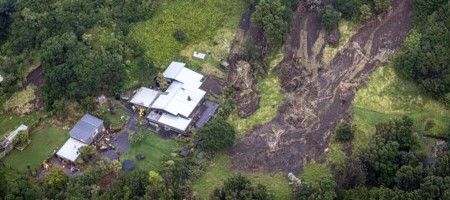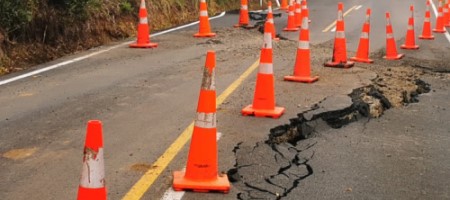In January last year, half of Auckland’s typical average annual rainfall fell across Auckland. Most of this was over the Auckland Anniversary weekend, including a huge deluge in only a few hours.
The resulting destruction was fast, heavy and spread right across the region. This was compounded further by Cyclone Gabrielle and then three further severe weather events.
Since then, a team of hundreds has been working relentlessly to repair and redesign roads, clear slips and blockages, build new local water infrastructure, fix up community facilities - and assess thousands of affected properties for future flooding risk.
Dealing with storm categorisation and support for private properties is uncharted territory for councils. This required new systems and funding streams to be set up and approved by Auckland ratepayers.
“Bringing this categorisation scheme to life in the country’s biggest city has been difficult, to say the least,” says Mace Ward, Deputy Group Recovery Manager.
"Finding a balance between support for affected residents, what is possible, and within the funding envelope, has presented some challenging decisions.

Categorisation and assessment activity shifts up a gear
“But the result of this is that with these foundations in place, we can move faster with our programme. While we only had our co-funding agreement with the Government confirmed in October, we managed to start our first buyouts in December, which was a key milestone and a signal of progress to come.
“It’s also good to know our progress is in line with other affected regions – despite the scale of impact here.”
There are now over 2400 homeowners that have opted into the categorisation process. This involves detailed technical assessments looking for an intolerable risk to life from future weather events at each home. So far, the assessment programme has completed over 1500 desktop and 1100 onsite assessments and finalised 530 categories for homeowners.
“Moving forward, we will be delivering new categorisations every week, with most completed by March and some more complex cases by mid-year. The more complex cases are where there might be a community-level solution and there is some further work needed to confirm these.
“This is highly detailed and technical work. It takes time and can’t be rushed because we must get it right. It’s about people’s safety first and foremost. It will also signal the future livability of a home and neighbourhood, and inadvertently impact things like insurance too.
“Still, we know this is not soon enough for people waiting. We will be doing our best to move things forward as quickly as possible, and in the meantime, making sure there is the right support available through this difficult time.”
Out of 530 categories confirmed so far, there are over 90 homes now eligible for a voluntary buy-out as Category 3. Over 60 of these owners are already moving through the buy-out process.
Once the homes are purchased by council and handed over, a sustainable deconstruction process will begin. This involves assessing whether they can be relocated or deconstructed or need to be demolished. From there, Auckland Council will identify future options for the land with the best interests of Auckland ratepayers in mind.
Mr Ward says the Recovery Office will also be opening a grant scheme for 2P homeowners so that they can undertake work at their homes required to make it safe to live in.

Infrastructure repairs are in full swing
We have made good progress on repairs needed on public facilities and infrastructure, with 72% of over 2000 transport projects, 64% of 1500 parks and facilities repairs, and 87% of over 11,000 stormwater service requests completed.
“For an idea of the scale, stormwater service requests increased by 65% last year compared to the average of previous years, and the damage across parks and facilities increased their work by 190%.”
In the meantime, unidentified issues are still coming to light. Watercare is continuing to lodge new damage reports, now totaling more than 200 individual cases to address.
“Our infrastructure focus going forward will be working as fast as we can to confirm which flooding infrastructure projects will reduce life-threatening flooding risk.”
Examples of community flood mitigation includes widening culverts, bridges, and more substantial Blue-Green Networks to make more room for water. But the solutions will be different in every situation.
“Where there are good options to reduce this risk, we are putting together business cases for funding approval by the Government. And this will require some detailed analysis which is underway, and will be informed by our categorisation findings,” Mr Ward says.
“The aim is to allow people to live in their homes without a risk to life, and to reduce general flooding for hundreds more. Part of this includes condensing the 30-year Making Space for Water programme into 5-10 years.
“Some projects will take two years; others will take up to 10 years. Given these timeframes, we are actively considering what this means for at-risk homes in these areas during this period. This seems a long time to wait, but again, we must get it right.”
With increasing climate uncertainty, there are some bigger long-term challenges beyond recovery.
“We’ll be doing our best to help turn learnings from these events into action. What’s becoming clear is that regardless of the solutions we put in place, there will still be thousands of homes in flood-risk areas that aren’t covered by this recovery programme,” Mr Ward adds.
“And in terms of future planning, there is a lot of work to be done on how we adapt to the changing climate both in terms of our residential and infrastructure planning and design.
“It’s a conversation we are all going to have to grapple with not just as a city, but across the country.”


